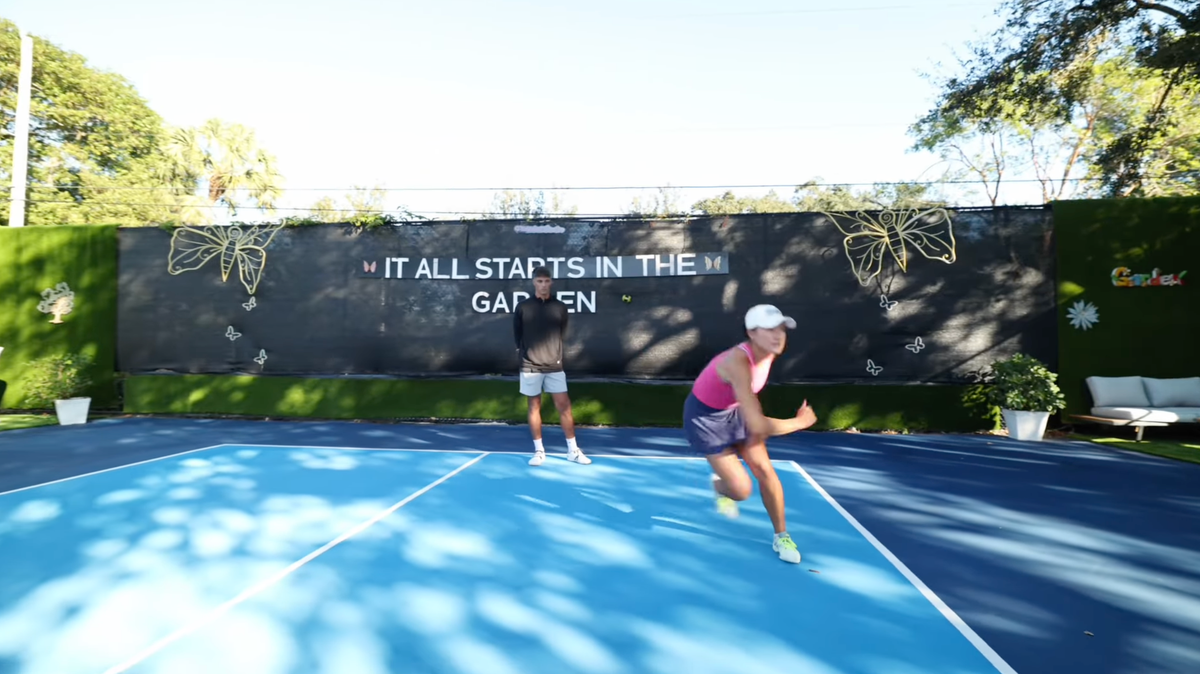How long do pickleball balls last?
The lifespan of a pickleball ball varies based on several factors, including the type of ball (indoor or outdoor), the frequency of gameplay, playing conditions, and how well you care for the balls.
With regular use, an indoor pickleball ball can last approximately a few months to a year. The softer surface of indoor courts means less wear and tear on the balls.
An outdoor pickleball ball generally needs to be replaced more frequently than an indoor ball, often ranging from a single month to a few months of play.
Check out our article on indoor vs outdoor pickleball balls.
How do you clean pickleball balls?
Cleaning pickleball balls is a straightforward task that helps maintain their quality and extend their lifespan.
Here’s a simple guide on how to clean them effectively:
What You’ll Need
- A bucket or large bowl
- Warm water
- Mild soap (dishwashing liquid works well)
- A damp cloth or sponge
- A towel for drying
6 Easy Steps to Clean Pickleball Balls
- Prepare Cleaning Solution: Fill the bucket or large bowl with warm water and add a few drops of mild soap. Stir gently to mix.
- Soak the Balls: Place the pickleball balls in the soapy water. Let them soak for a few minutes. This helps to loosen any dirt or grime that may have accumulated on the surface.
- Gentle Scrub: After soaking, use a soft cloth or sponge to gently scrub the balls. Be careful not to scrub too hard as you don’t want to damage the surface texture of the balls.
- Rinse Thoroughly: Once you’ve scrubbed the balls, rinse them under clean, running water to remove any soap residue. It’s important to ensure all the soap is rinsed off to avoid making the balls slippery.
- Dry the Balls: After rinsing, gently pat the balls dry with a towel. If possible, allow them to air dry completely by placing them in a well-ventilated area or outdoors, but avoid direct sunlight which might degrade the plastic.
- Inspect the Balls: Once dry, inspect each ball for any signs of wear or damage. Regular cleaning also offers a good opportunity to check if any balls need to be replaced
How do you store pickleball balls?
Storing pickleball balls properly is essential for maintaining their condition and longevity. Here are some best practices for storing your pickleball balls to keep them in top shape:
1. Choose the Right Environment
- Temperature-Controlled Area: Store your pickleball balls in a location with a stable, moderate temperature. Extreme temperatures, both hot and cold, can affect the balls’ durability and shape.
- Avoid Direct Sunlight: Continuous exposure to sunlight can degrade the plastic of the balls, causing them to become brittle or discolored. Choose a storage spot away from direct sunlight.
2. Maintain Dry Conditions
- Keep Them Dry: Ensure that the balls are completely dry before storing them. Moisture can lead to the development of mold or mildew, which can damage the balls. If they were used or cleaned before storage, allow them to air dry thoroughly.
- Use Desiccants if Necessary: In humid environments, consider using desiccant packets (available on Amazon) in your storage container to absorb excess moisture and protect the balls.
3. Use Appropriate Containers
- Breathable Storage: While it’s tempting to seal pickleball balls in an airtight container, allowing for some air circulation can prevent moisture buildup. Mesh bags or containers with ventilation holes are ideal.
- Avoid Overcrowding: Don’t cram too many balls into a single container. Overcrowding can deform the balls or cause them to lose their shape.
4. Organize for Easy Access
- Sort by Use: If you have balls designated for practice and others for official games, consider storing them separately. This organization makes it easier to grab what you need without sorting through all your equipment every time.
For players who travel to pickleball courts, consider using a dedicated sports bag or compartment within your pickleball bag for balls. This ensures they are protected while in transit and easy to carry to and from locations.
At what temperature do pickleballs break?
Pickleball balls can become more susceptible to breaking or cracking under extreme temperature conditions, especially in cold weather.
While there isn’t a precise temperature universally acknowledged at which pickleball balls will break, they are generally more brittle and prone to damage when temperatures drop below freezing (32°F or 0°C).
On the other hand, in very high temperatures, pickleball balls might not necessarily break, but they can become softer and potentially warp, affecting their bounce and flight characteristics.
What pickleballs are best when playing in cold weather?
Playing pickleball in cold weather poses unique challenges, as the balls can become harder and less responsive. To counteract these conditions, choosing balls designed for durability and better playability in colder temperatures is key.
Here are our suggestions on the best balls to use:
1. Onix Pure 2 Outdoor Ball
- Brand: Onix
- Features: The Onix Pure 2 Outdoor Ball (available here) is known for its outstanding durability and softer feel, making it a popular choice for colder weather. It features true flight technology and is designed to perform well in various conditions, including lower temperatures.
2. Dura Fast 40 Outdoor Ball
- Brand: Onix
- Features: The Dura Fast 40 (available here) is a favorite among tournament players and is designed for outdoor play. Its hard plastic construction is engineered to withstand the rigors of cold weather play, maintaining a consistent bounce and flight pattern even in cooler temperatures.
3. Franklin X-40 Performance Outdoor Ball
- Brand: Franklin Sports
- Features: The Franklin X-40 (available here) is another excellent option for cold weather play. It is designed with durability in mind and maintains a good balance between hardness and playability in cooler conditions. The ball’s construction ensures a consistent bounce and flight path.
If you want more options, check out our guide on the best indoor and outdoor pickleball balls on the market.
Signs It’s Time to Replace Your Pickleball Balls
- Visible Damage: Cracks, splits, or significant wear on the ball’s surface.
- Change in Performance: If the ball doesn’t bounce as well or seems to fly differently, it may be time for a new one.
- Sound: A change in the sound the ball makes upon impact can indicate it’s time to replace it.
Why it’s important to clean and store pickleball balls properly?
Proper maintenance is crucial for maintaining pickleball balls quality, ensuring optimal performance during play, and extending their lifespan. Clean balls prevent unpredictable bounces and maintain their intended aerodynamic properties, while proper storage protects them from environmental damage such as warping or cracking due to extreme temperatures or sunlight.
This proper care not only saves money by reducing the need for frequent replacements but also supports fair play by ensuring all participants use balls in good condition.
Make sure also to read our guide on the lifespan of pickleball paddles.
By following our pickleball equipment cleaning and storage tips, you can help ensure that your pickleball balls remain in good condition, ready for your next game.
How useful was this post?
Click on a star to rate it!
We are sorry that this post was not useful for you!
Let us improve this post!
Tell us how we can improve this post?
Anuncie Aqui / Advertise Here
Sua marca para o mundo Pickleball! / Your brand for the Pickleball world!

 English
English  Spanish
Spanish  Portuguese
Portuguese  German
German  Italian
Italian  Japanese
Japanese  French
French  Polish
Polish  Russian
Russian  Netherlands
Netherlands  Hungarian
Hungarian  Turkish
Turkish  Videos
Videos  Pickleball Union
Pickleball Union








 English (US) ·
English (US) ·  Portuguese (BR) ·
Portuguese (BR) ·